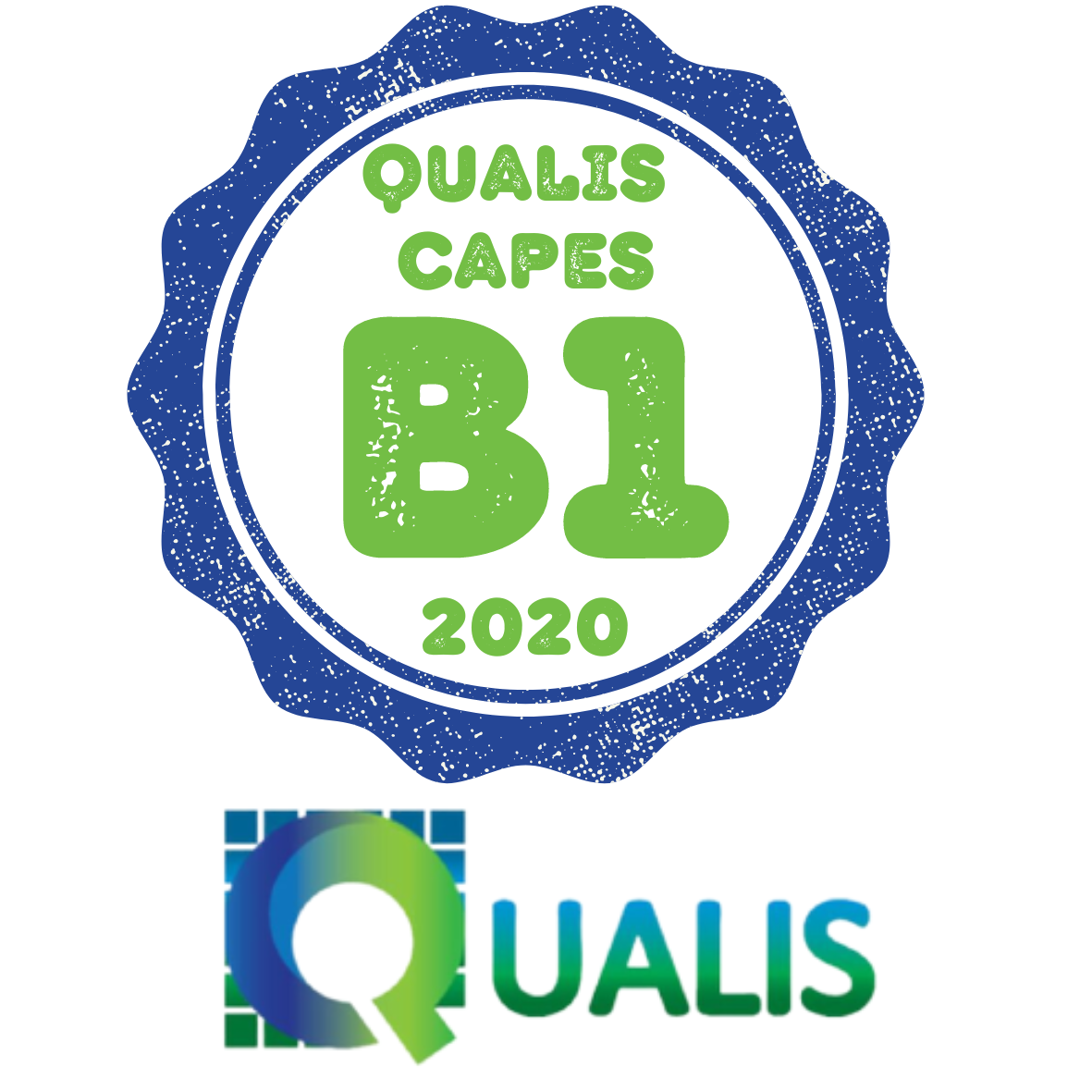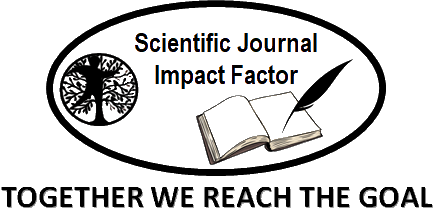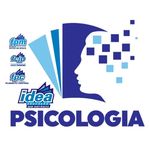ATENÇÃO, MEMÓRIA E NOMEAÇÃO DIRETAMENTE BENEFICIADOS POR ESTIMULAÇÃO MAGNÉTICA TRANSCRANIANA APÓS ACIDENTE VASCULAR CEREBRAL
DOI:
https://doi.org/10.22289/2446-922X.V10N1A32Palavras-chave:
Reabilitação Cognitiva, Avaliação Cognitiva Montreal, Cognição, Lesão CerebralResumo
Alterações das funções cognitivas são sequelas comuns após um Acidente Vascular Cerebral (AVC). Essas alterações representam uma demanda significativa nos serviços de reabilitação que tem utilizado a Estimulação Magnética Transcraniana (EMT) para melhorar as funções motoras e o humor de pacientes pós AVC. Além de sua característica não invasiva, há evidências de que esta técnica altere positivamente os processos cognitivos. Trata-se de um estudo observacional, prospectivo e transversal envolvendo a participação de 30 pacientes com idade entre 24 e 74 anos que sofreram AVC, tendo como objetivo investigar o efeito da EMT sobre a cognição. Este protocolo foi aprovado por Comitê de Ética sob n° 54977216.3.0000.5078. A seleção dos participantes ocorreu no Serviço de Neuromodulação em um Centro Especializado de Reabilitação. Todos os participantes foram avaliados por meio do Montreal Cognitive Assessment (MOCA), um teste cognitivo de triagem padrão ouro internacional para detectar comprometimento cognitivo leve e que tem sido utilizado no contexto de AVC e outras lesões adquiridas. Os pacientes foram submetidos a um protocolo de EMT de 20 sessões de 20 minutos, duas vezes por semana. Os escores totais obtidos pelos participantes no teste MOCA nos períodos pré e pós-intervenção foram, respectivamente: 19,43±3,71 e 21,30±4,25, demonstrando uma melhora significativa. Observou-se uma melhora nos subtestes atenção, memória e nomeação 3,20±1,49; 2,10±1,63; 2,10±1,63 em contraste com 3,77±1,48; 2,97±1,88; 2,67±0,61 nos períodos pré e pós-intervenção, respectivamente (p <0,05). Esses resultados reforçam as evidências de que a EMT melhora o desempenho cognitivo geral particularmente as funções relacionadas às tarefas de atenção, memória e nomeação.
Downloads
Referências
Abzhandadze, T., Rafsten, L., Lundgren Nilsson, Å., Palstam, A., & Sunnerhagen, K. S. (2019). Very Early MoCA Can Predict Functional Dependence at 3 Months After Stroke: A Longitudinal, Cohort Study. Frontiers in Neurology, 10. https://doi.org/10.3389/fneur.2019.01051
Andrade, S. M., Fernández-Calvo, B., Boggio, P. S., de Oliveira, E. A., Gomes, L. F., Pinheiro Júnior, J. E. G., Rodrigues, R. M., de Almeida, N. L., Moreira, G. M. de S., & Alves, N. T. (2015). Neurostimulation for cognitive rehabilitation in stroke (NeuroCog): Study protocol for a randomized controlled trial. Trials, 16(1). https://doi.org/10.1186/s13063-015-0945-1
Begemann, M. J., Brand, B. A., C¨ur?i?-Blake, B., Aleman, A., & Sommer, I. E. (2020). Efficacy of non-invasive brain stimulation on cognitive functioning in brain disorders: A meta-Analysis. Psychological Medicine, 50(15), 2465–2486. https://doi.org/10.1017/S0033291720003670
Burton, L., & Tyson, S. F. (2015). Screening for cognitive impairment after stroke: A systematic review of psychometric properties and clinical utility. In Journal of Rehabilitation Medicine 47(3), 193–203. Foundation for Rehabilitation Information. https://doi.org/10.2340/16501977-1930
Cosmo, C., Zandvakili, A., Petrosino, N. J., Berlow, Y. A., & Philip, N. S. (2021). Repetitive Transcranial Magnetic Stimulation for Treatment-Resistant Depression: Recent Critical Advances in Patient Care. Curr Treat Options Psych, 8, 47–63. https://doi.org/10.1007/s40501-021-00238-y
das Nair, R., Cogger, H., Worthington, E., & Lincoln, N. B. (2016). Cognitive rehabilitation for memory deficits after stroke. In Cochrane Database of Systematic Reviews 2016, Issue 9. Art. No.: CD002293 John Wiley and Sons Ltd. https://doi.org/10.1002/14651858.CD002293.pub3
Dionísio, A., Duarte, I. C., Patrício, M., & Castelo-Branco, M. (2018). Transcranial Magnetic Stimulation as an Intervention Tool to Recover from Language, Swallowing and Attentional Deficits after Stroke: A Systematic Review. Cerebrovascular Diseases, 46(3–4), 176–183. https://doi.org/10.1159/000494213
Dong, Y., Sharma, V. K., Chan, B. P. L., Venketasubramanian, N., Teoh, H. L., Seet, R. C. S., Tanicala, S., Chan, Y. H., & Chen, C. (2010). The Montreal Cognitive Assessment (MoCA) is superior to the Mini-Mental State Examination (MMSE) for the detection of vascular cognitive impairment after acute stroke. Journal of the Neurological Sciences, 299(1–2), 15–18. https://doi.org/10.1016/j.jns.2010.08.051
Frey, J., Najib, U., Lilly, C., & Adcock, A. (2020). Novel TMS for Stroke and Depression (NoTSAD): Accelerated Repetitive Transcranial Magnetic Stimulation as a Safe and Effective Treatment for Post-stroke Depression. Frontiers in Neurology, 11. https://doi.org/10.3389/fneur.2020.00788
Fu, C., Jin, X., Chen, B., Xue, F., Niu, H., Guo, R., Chen, Z., Zheng, H., Wang, L., & Zhang, Y. (2017). Comparison of the Mini-Mental State Examination and Montreal Cognitive Assessment executive subtests in detecting post-stroke cognitive impairment. Geriatrics and Gerontology International, 17(12), 2329–2335. https://doi.org/10.1111/ggi.13069
Han, C., Tang, J., Tang, B., Han, T., Pan, J., & Wang, N. (2024). The effectiveness and safety of noninvasive brain stimulation technology combined with speech training on aphasia after stroke: A systematic review and meta-analysis. Medicine, 103(2), p e36880.
https://doi.org/10.1097/MD.0000000000036880
Harvey, M., & Kerkhoff, G. (2015). Effects of non-invasive brain stimulation on attention: Current debates, cognitive studies and novel clinical applications. Neuropsychologia, 74, 1–6. https://doi.org/10.1016/j.neuropsychologia.2015.06.020
Hofmeijer, J., Ham, F., & Kwakkel, G. (2023). Evidence of rTMS for Motor or Cognitive Stroke Recovery: Hype or Hope? Stroke, 54(10), 2500–2511. https://doi.org/10.1161/STROKEAHA.123.043159
Iimori, T., Nakajima, S., Miyazaki, T., Tarumi, R., Ogyu, K., Wada, M., Tsugawa, S., Masuda, F., Daskalakis, Z. J., Blumberger, D. M., Mimura, M., & Noda, Y. (2019). Effectiveness of the prefrontal repetitive transcranial magnetic stimulation on cognitive profiles in depression, schizophrenia, and Alzheimer’s disease: A systematic review. In Progress in Neuro-Psychopharmacology and Biological Psychiatry, 88, 31-40. https://doi.org/10.1016/j.pnpbp.2018.06.014
Khaw, J., Subramaniam, P., Aziz, N. A. A., Raymond, A. A., Zaidi, W. A. W., & Ghazali, S. E. (2021). Current update on the clinical utility of mmse and moca for stroke patients in asia: A systematic review. International Journal of Environmental Research and Public Health, 18(17). https://doi.org/10.3390/ijerph18178962
Kim, B. R., Kim, D. Y., Ho Chun, M., Hwa Yi, J., & Sung Kwon, J. (2010). Effect of repetitive transcranial magnetic stimulation on cognition and mood in stroke patients: A double-blind, sham-controlled trial. American Journal of Physical Medicine and Rehabilitation, 89(5), 362–368. https://doi.org/10.1097/PHM.0b013e3181d8a5b1
Kim, W. J., Rosselin, C., Amatya, B., Hafezi, P., & Khan, F. (2020). Repetitive transcranial magnetic stimulation for management of post-stroke impairments: An overview of systematic reviews. Journal of Rehabilitation Medicine, 52(2). https://doi.org/10.2340/16501977-2637
Lage, C., Wiles, K., Shergill, S. S., & Tracy, D. K. (2016). A systematic review of the effects of low-frequency repetitive transcranial magnetic stimulation on cognition. Journal of Neural Transmission, 123(12), 1479–1490. https://doi.org/10.1007/s00702-016-1592-8
Lee, C., Kim, Y., & Kaang, B. K. (2022). The Primary Motor Cortex: The Hub of Motor Learning in Rodents. In Neuroscience 485, 163–170. Elsevier Ltd. https://doi.org/10.1016/j.neuroscience.2022.01.009
Lefaucheur, J. P., Aleman, A., Baeken, C., Benninger, D. H., Brunelin, J., Di Lazzaro, V., Filipovi?, S. R., Grefkes, C., Hasan, A., Hummel, F. C., Jääskeläinen, S. K., Langguth, B., Leocani, L., Londero, A., Nardone, R., Nguyen, J. P., Nyffeler, T., Oliveira-Maia, A. J., Oliviero, A., … Ziemann, U. (2020). Evidence-based guidelines on the therapeutic use of repetitive transcranial magnetic stimulation (rTMS): An update (2014–2018). In Clinical Neurophysiology 131(2), 474–528. Elsevier Ireland Ltd. https://doi.org/10.1016/j.clinph.2019.11.002
Li, K. P., Sun, J., Wu, C. Q., An, X. fei, Wu, J. J., Zheng, M. X., Hua, X. Y., & Xu, J. G. (2023). Effects of repetitive transcranial magnetic stimulation on post-stroke patients with cognitive impairment: A systematic review and meta-analysis. In Behavioural Brain Research, 439. Elsevier B.V. https://doi.org/10.1016/j.bbr.2022.114229
Loetscher, T., Potter, K. J., Wong, D., & das Nair, R. (2019). Cognitive rehabilitation for attention deficits following stroke. In Cochrane Database of Systematic Reviews 2019 (11), Art. No.: CD002842. John Wiley and Sons Ltd. https://doi.org/10.1002/14651858.CD002842.pub3
Miniussi, C., Cappa, S. F., Cohen, L. G., Floel, A., Fregni, F., Nitsche, M. A., Oliveri, M., Pascual-Leone, A., Paulus, W., Priori, A., & Walsh, V. (2008). Efficacy of repetitive transcranial magnetic stimulation/transcranial direct current stimulation in cognitive neurorehabilitation. Brain Stimulation, 1(4), 326–336. https://doi.org/10.1016/j.brs.2008.07.002
Moraes, F., Ferreira, S., Souza, Â., & Diniz, D. (2016, June). Neuromodulation by Transcranial Magnetic Stimulation (TMS): Effective Cognitive Rehabilitation after a Stroke. Brazilian Journal of Neurosurgery, 149–154.
Moraes, F. V., Ferreira, S. de F. B., & Diniz, D. S. (2023). Ganho Cognitivo com Estimulação Magnética Transcraniana Em Alvo Motor Pós Acidente Vascular Cerebral. Psicologia e Saúde Em Debate, 9(2), 835–852. https://doi.org/10.22289/2446-922x.v9n2a47
Morishita, T., & Hummel, F. C. (2017). Non-invasive Brain Stimulation (NIBS) in Motor Recovery After Stroke: Concepts to Increase Efficacy. Current Behavioral Neuroscience Reports, 4(3), 280–289. https://doi.org/10.1007/s40473-017-0121-x
Myczkowski, M. L., Fernandes, A., Moreno, M., Valiengo, L., Lafer, B., Moreno, R. A., Padberg, F., Gattaz, W., & Brunoni, A. R. (2018). Cognitive outcomes of TMS treatment in bipolar depression: Safety data from a randomized controlled trial. Journal of Affective Disorders, 235, 20–26. https://doi.org/10.1016/j.jad.2018.04.022
Pell, G. S., Roth, Y., & Zangen, A. (2011). Modulation of cortical excitability induced by repetitive transcranial magnetic stimulation: Influence of timing and geometrical parameters and underlying mechanisms. Progress in Neurobiology, 93(1), 59–98. https://doi.org/10.1016/j.pneurobio.2010.10.003
Pinto, C. B. (2018). Efeito da terapia combinada da EMTr com fluoxetina na reabilitação da função motora de pacientes pós AVE isquêmico- tese de doutorado.
Rektorova, I., Megova, S., Bares, M., & Rektor, I. (2005). Cognitive functioning after repetitive transcranial magnetic stimulation in patients with cerebrovascular disease without dementia: A pilot study of seven patients. Journal of the Neurological Sciences, 229–230, 157–161. https://doi.org/10.1016/j.jns.2004.11.021
Robinson, R. G., & Starkstein, S. E. (2006). Aspectos neuropsiquiátricos dos distúrbios cerebrovasculares. In S. C. Yudofsky & R. E. Hales (Eds.), Neuropsiquiatria e Neurociências na Prática Clínica (4th ed., pp. 605–628). Artmed.
Rocha, G. B. de V., Gonçalves, S. J. da C., Vieira, B. S. da S., & Costa, C. P. B. (2022). Análise epidemiológica da ocorrência do acidente vascular encefálico e sua mortalidade no período de 2010 a 2019 no Brasil. Revista Ibero-Americana de Humanidades, Ciências e Educação, 8(9), 809–826. https://doi.org/10.51891/rease.v8i9.6827
Roh, D., Jang, K. W., & Kim, C. H. (2023). Clinical Advances in Treatment Strategies for Obsessive-compulsive Disorder in Adults. In Clinical Psychopharmacology and Neuroscience 21(4), 676–685. Korean College of Neuropsychopharmacology. https://doi.org/10.9758/cpn.23.1075
Salazar, A. P. S., Vaz, P. G., Marchese, R. R., Stein, C., Pinto, C., & Pagnussat, A. S. (2018). Noninvasive Brain Stimulation Improves Hemispatial Neglect After Stroke: A Systematic Review and Meta-Analysis. Archives of Physical Medicine and Rehabilitation, 99(2), 355-366.e1. https://doi.org/10.1016/j.apmr.2017.07.009
Shi, D., Chen, X., & Li, Z. (2018). Diagnostic test accuracy of the Montreal Cognitive Assessment in the detection of post-stroke cognitive impairment under different stages and cutoffs: a systematic review and meta-analysis. Neurological Sciences, 39(4), 705–716. https://doi.org/10.1007/s10072-018-3254-0
Somaa, F. A., de Graaf, T. A., & Sack, A. T. (2022). Transcranial Magnetic Stimulation in the Treatment of Neurological Diseases. In Frontiers in Neurology ,13, 793253.Frontiers Media S.A. https://doi.org/10.3389/fneur.2022.793253
Spaccavento, S., Marinelli, C. V., Nardulli, R., Macchitella, L., Bivona, U., Piccardi, L., Zoccolotti, P., & Angelelli, P. (2019). Attention deficits in stroke patients: The role of lesion characteristics, time from stroke, and concomitant neuropsychological deficits. Behavioural Neurology, 2019. https://doi.org/10.1155/2019/7835710
Suda, S., Muraga, K., Ishiwata, A., Nishimura, T., Aoki, J., Kanamaru, T., Suzuki, K., Sakamoto, Y., Katano, T., Nagai, K., Hatake, S., Satoi, S., Matsumoto, N., Nito, C., Nishiyama, Y., Mishina, M., & Kimura, K. (2020). Early Cognitive Assessment Following Acute Stroke: Feasibility and Comparison between Mini-Mental State Examination and Montreal Cognitive Assessment. Journal of Stroke and Cerebrovascular Diseases, 29(4). https://doi.org/10.1016/j.jstrokecerebrovasdis.2020.104688
Sun, M., Chen, K., He, Y., Zhang, Y., Zhuo, Y., & Zhuang, H. (2023). Effect of repetition of rTMS at different frequencies on the efficacy of swallowing disorders after stroke: A systematic review and meta-analysis. Medicine (United States), 102(43), p e35504. https://doi.org/10.1097/MD.0000000000035504
Swartz, R. H., Cayley, M. L., Lanctôt, K. L., Murray, B. J., Smith, E. E., Sahlas, D. J., Herrmann, N., Cohen, A., & Thorpe, K. E. (2016). Validating a Pragmatic Approach to Cognitive Screening in Stroke Prevention Clinics Using the Montreal Cognitive Assessment. Stroke, 47(3), 807–813. https://doi.org/10.1161/STROKEAHA.115.011036
Tomeh, A., Yusof Khan, A. H. K., Inche Mat, L. N., Basri, H., & Wan Sulaiman, W. A. (2022). Repetitive Transcranial Magnetic Stimulation of the Primary Motor Cortex beyond Motor Rehabilitation: A Review of the Current Evidence. In Brain Sciences 12(6). MDPI. https://doi.org/10.3390/brainsci12060761
Tsai, P. Y., Lin, W. S., Tsai, K. T., Kuo, C. Y., & Lin, P. H. (2020). High-frequency versus theta burst transcranial magnetic stimulation for the treatment of poststroke cognitive impairment in humans. Journal of Psychiatry and Neuroscience, 45(4), 262–270. https://doi.org/10.1503/jpn.190060
Wu, C. Y., Hung, S. J., Lin, K. C., Chen, K. H., Chen, P., & Tsay, P. K. (2019). Responsiveness, Minimal Clinically Important Difference, and Validity of the MoCA in Stroke Rehabilitation. Occupational Therapy International. https://doi.org/10.1155/2019/2517658
Xiong, H. Y., Zheng, J. J., & Wang, X. Q. (2022). Non-invasive Brain Stimulation for Chronic Pain: State of the Art and Future Directions. In Frontiers in Molecular Neuroscience 15, 888716 Frontiers Media S.A. https://doi.org/10.3389/fnmol.2022.888716
Xuefang, L., Guihua, W., & Fengru, M. (2021). The effect of early cognitive training and rehabilitation for patients with cognitive dysfunction in stroke. International Journal of Methods in Psychiatric Research, 30(3). https://doi.org/10.1002/mpr.1882
Zhou, L., Jin, Y., Wu, D., Cun, Y., Zhang, C., Peng, Y., Chen, N., Yang, X., Zhang, S., Ning, R., Kuang, P., Wang, Z., & Zhang, P. (2023). Current evidence, clinical applications, and future directions of transcranial magnetic stimulation as a treatment for ischemic stroke. In Frontiers in Neuroscience 17, 1177283. Frontiers Media SA. https://doi.org/10.3389/fnins.2023.1177283
Downloads
Publicado
Como Citar
Edição
Seção
Licença
Copyright (c) 2024 Psicologia e Saúde em debate

Este trabalho está licenciado sob uma licença Creative Commons Attribution-NonCommercial-NoDerivatives 4.0 International License.
Os autores declaram que participaram na elaboração do manuscrito em questão, e que o citado manuscrito é original e não foi previamente publicado em parte ou no todo e que nenhum outro manuscrito similar sob autoria dos mesmos está publicado ou em análise por outro periódico seja impresso ou eletrônico. Declaram ainda, que não violaram nem infringiram nenhum copyright ou nenhum outro tipo de direito de propriedade de outras pessoas, e que todas as citações no texto são fatos verdadeiros ou baseados em pesquisas de exatidão cientificamente considerável. Os autores comprometem, quando solicitado, a fornecer informações aos editores a respeito dos dados deste manuscrito.
A revista segue o padrão Creative Commons (BY NC ND), que permite o remixe, adaptação e criação de obras derivadas do original, mesmo para fins comerciais. As novas obras devem conter menção ao(s) autor(es) nos créditos. O site utiliza o Open Journal Systems, sistema de código livre gratuito para a administração e a publicação de revistas desenvolvido com suporte e distribuição pelo Public Knowledge Project sob a licença GNU General Public License.
































